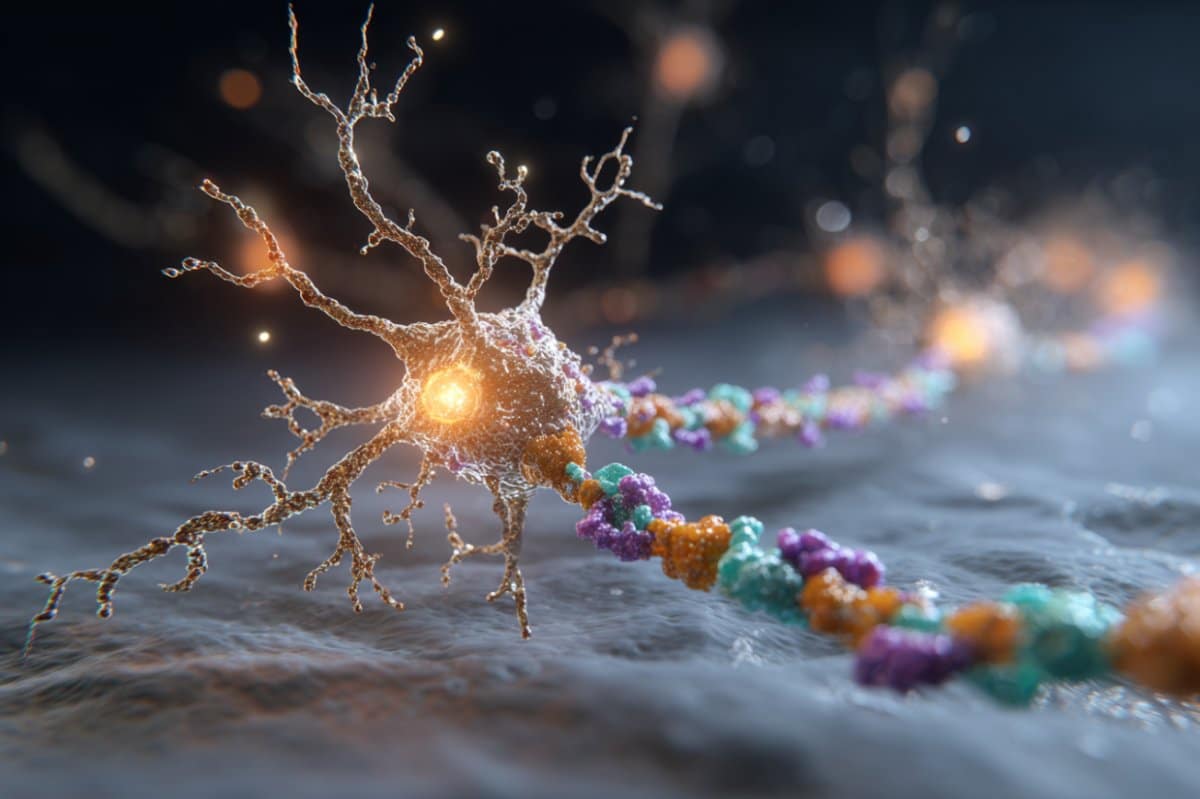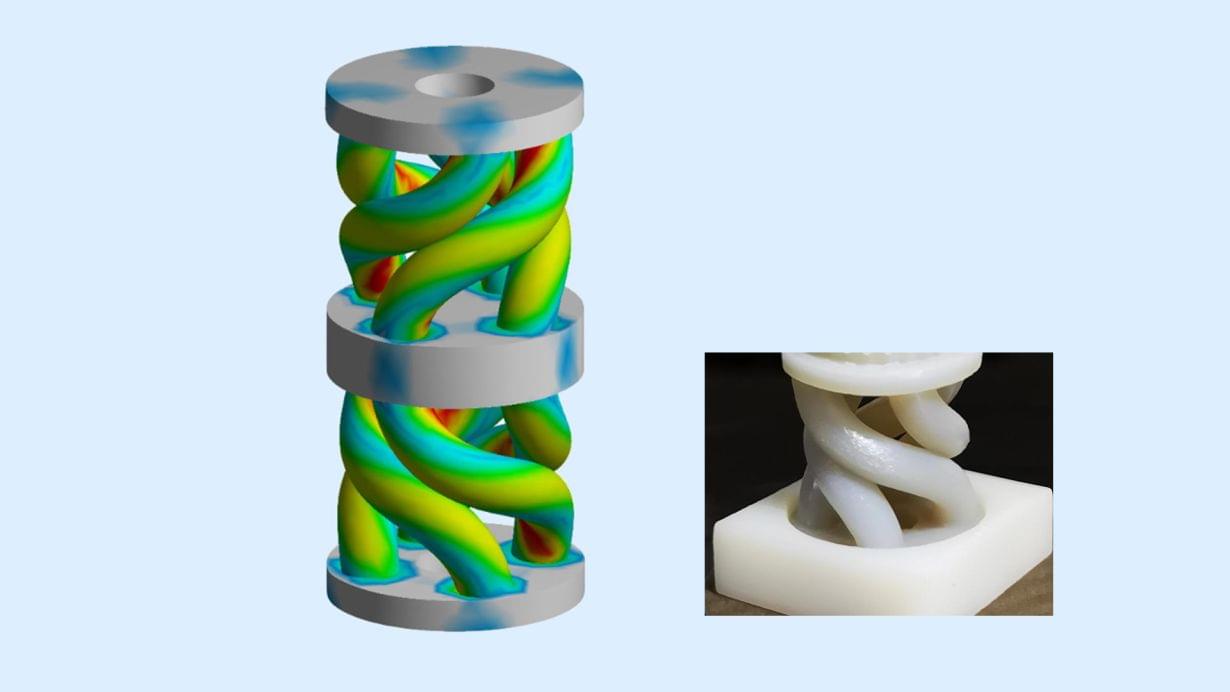Scientists have uncovered how the brain’s 5-HT1A serotonin receptor—vital in mood regulation—functions at the molecular level.




A team of international researchers led by King Abdullah University of Science and Technology (KAUST) and including researchers from King Abdulaziz City for Science and Technology (KACST) has developed a new composite material that enhances the performance of solar cells. Solar cells with the material functioning for weeks in the Saudi Arabia desert showed higher power output and a longer operation time than solar cells without. Additionally, the material is cheap to fabricate and reduces the cost of maintaining solar cells. The study can be read in Materials Science and Engineering.
Composite material keeps solar cells cool using air moisture and no electricity to extend solar cell lifetime more than 200%.

An international research team coordinated at KIT (Karlsruhe Institute of Technology) has developed mechanical metamaterials with a high elastic energy density. Highly twisted rods that deform helically provide these metamaterials with a high stiffness and enable them to absorb and release large amounts of elastic energy. The researchers conducted simple compression experiments to confirm the initial theoretical results. Their findings have been published in the science journal Nature. (DOI: 10.1038/s41586-025–08658-z)
Be it springs for absorbing energy, buffers for mechanical energy storage, or flexible structures in robotics or energy-efficient machines: Storage of mechanical energy is required for many technologies. Kinetic energy, i.e. motion energy or the corresponding mechanical work, is converted into elastic energy in such a way that it can be fully released again when required. The key characteristic here is enthalpy – the energy density that can be stored in and recovered from an element of the material. Peter Gumbsch, Professor for mechanics of materials at KIT’s Institute for Applied Materials (IAM), explains that achieving the highest possible enthalpy is challenging: “The difficulty is to combine conflicting properties: high stiffness, high strength and large recoverable strain.”
Clever arrangement of helically deformed rods in metamaterials.
Power Beaming and Space Solar — Dr. Paul Jaffe Ph.D., Tactical Technology Office, DARPA.

Researchers from MIT and elsewhere have designed a novel transmitter chip that significantly improves the energy efficiency of wireless communications, which could boost the range and battery life of a connected device.
Their approach employs a unique modulation scheme to encode digital data into a wireless signal, which reduces the amount of error in the transmission and leads to more reliable communications.
The compact, flexible system could be incorporated into existing internet-of-things devices to provide immediate gains, while also meeting the more stringent efficiency requirements of future 6G technologies.

The ER-100 drug candidate reverses aging in mice, and David Sinclair says human trials start soon. Is this a magic pill for aging? Dr. Aubrey de Grey discusses the latest advances in life-extension research.
Our story begins on X, where user “rand_longevity” wrote, “Aging will be reversible in humans within 8 years”, to which Dr. David Sinclair replied, “8 years? After successful non-human primate trials, human age reversal trials are set to begin in 6 months”, later naming the ER-100 drug candidate.
Life Biosciences ER-100 drug candidate leverages partial epigenetic programming using 3 of the 4 Yamanaka factors to promote cellular rejuvenation to a younger state without the loss of cell identity. They believe this will help prevent or reverse age-related diseases at a root level — but they’re not the only organization pursuing life-extension research.
Dr. de Grey’s own research has focused primarily on accumulated side effects from metabolism, embodied in the title of his 1999 book, “The Mitochondrial Free Radical Theory of Aging”.
Dr. de Grey is well-known as one of the top gerontology and life-extension scientists in the world, and his own work has also been successful in extending the lifespan of lab animals. In this program, he discusses his work and some of the key elements of living a longer, healthier life.
DISCLAIMER: This program is a discussion is about ongoing scientific research, and is NOT providing medical advice. Please consult your doctor before starting any supplements, beginning an exercise routine, or undertaking lifestyle changes.

A new artificial intelligence (AI) tool could make it much easier—and cheaper—for doctors and researchers to train medical imaging software, even when only a small number of patient scans are available.
The AI tool improves upon a process called medical image segmentation, where every pixel in an image is labeled based on what it represents—cancerous or normal tissue, for example. This process is often performed by a highly trained expert, and deep learning has shown promise in automating this labor-intensive task.
The big challenge is that deep learning-based methods are data hungry—they require a large amount of pixel-by-pixel annotated images to learn, explained Li Zhang, a Ph.D. student in the Department of Electrical and Computer Engineering at the University of California San Diego. Creating such datasets demands expert labor, time and cost. And for many medical conditions and clinical settings, that level of data simply doesn’t exist.
